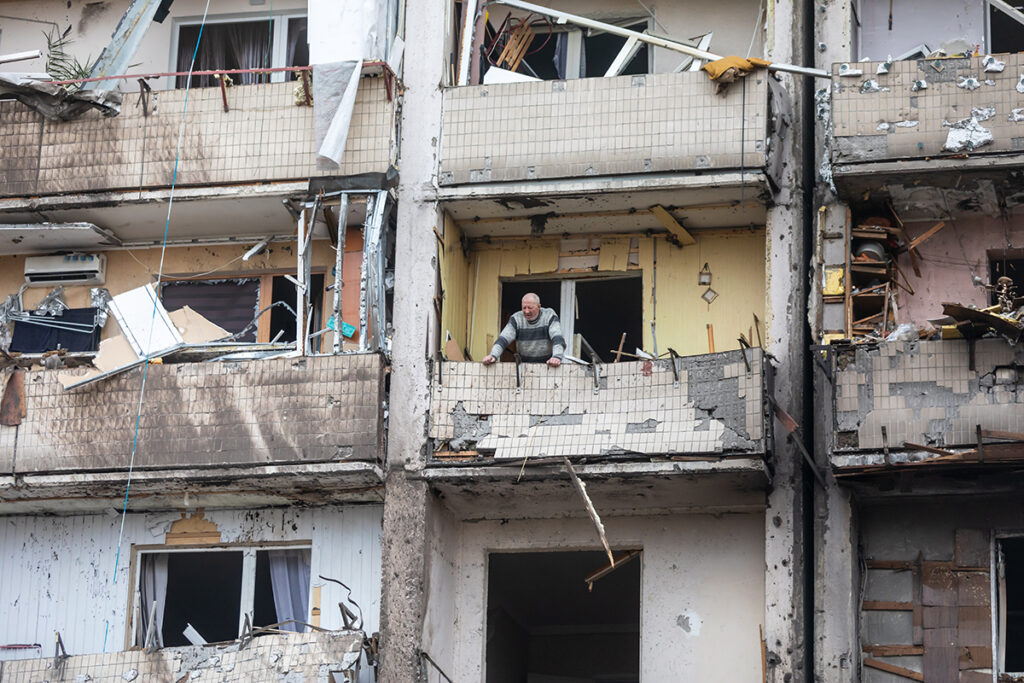In a dramatic pre-dawn operation, Russia escalated tensions by launching a barrage of 31 missiles at Kyiv, marking the first significant assault on the Ukrainian capital in over a month. Despite the intensity of the attack, which included both ballistic and cruise missiles, Ukraine’s air defenses showcased their prowess by intercepting all incoming threats. The debris from the intercepted missiles, however, resulted in injuries and significant property damage, highlighting the enduring risk to civilians in conflict zones.
The early morning offensive disrupted the relative calm in Kyiv, jolting residents awake with a series of loud explosions around 5 a.m. The coordinated missile attack, a mix of two ballistic and 29 cruise missiles, came from various directions, aiming to overwhelm the city’s defenses. Kyiv’s advanced air defense systems, which have been notably effective compared to other regions of the country, played a crucial role in mitigating the impact of the assault. This high interception rate, a testament to the city’s preparedness, has made Russian attempts to target the capital increasingly futile compared to the war’s early days. Nevertheless, Ukrainian officials have consistently voiced the need for more advanced Western weapons to sustain their defensive efforts and ultimately repel the Russian invasion.
This aggressive move by Russia follows President Vladimir Putin’s warning of retaliation against Ukrainian aerial attacks on the Belgorod region, which borders Ukraine. Putin’s remarks underscored a potential escalation in targeting civilian infrastructure and other key sites in response to Ukrainian actions.
The missile attack resulted in 13 casualties, including a child, with a range of injuries reported. The falling wreckage wreaked havoc in residential areas, damaging buildings, igniting fires in at least one apartment complex, and littering streets with debris. Among the evacuees, stories of narrow escapes and significant property loss painted a harrowing picture of the attack’s immediate aftermath.
The incident occurred shortly after Jake Sullivan, President Joe Biden’s top foreign policy adviser, visited Kyiv, signaling the international dimension of the conflict and the critical role of U.S. support for Ukraine. Concurrently, the Belgorod region experienced its own set of challenges, with attacks causing injuries and damage, further illustrating the broadening scope of the conflict.
In light of the ongoing assaults, Ukrainian President Volodymyr Zelenskyy has reiterated calls for increased support from Western allies, specifically requesting more air defense systems to protect against the now frequent missile strikes across the country. Zelenskyy highlighted the effectiveness of U.S.-made Patriot systems and other advanced defenses in thwarting Russian missile capabilities, underscoring the strategic importance of continued international support.
The European Union, recognizing the urgency of the situation, discussed ways to enhance arms and ammunition production for Ukraine during a summit in Brussels. This initiative reflects a growing recognition of the need for sustained military support to Ukraine as Russia diversifies its targets, including recent devastating strikes on other Ukrainian cities such as Kharkiv and Odesa.
As the conflict enters a new phase of heightened aggression, the international community’s response and the resilience of Ukraine’s defense capabilities remain central to the unfolding narrative in Eastern Europe.


